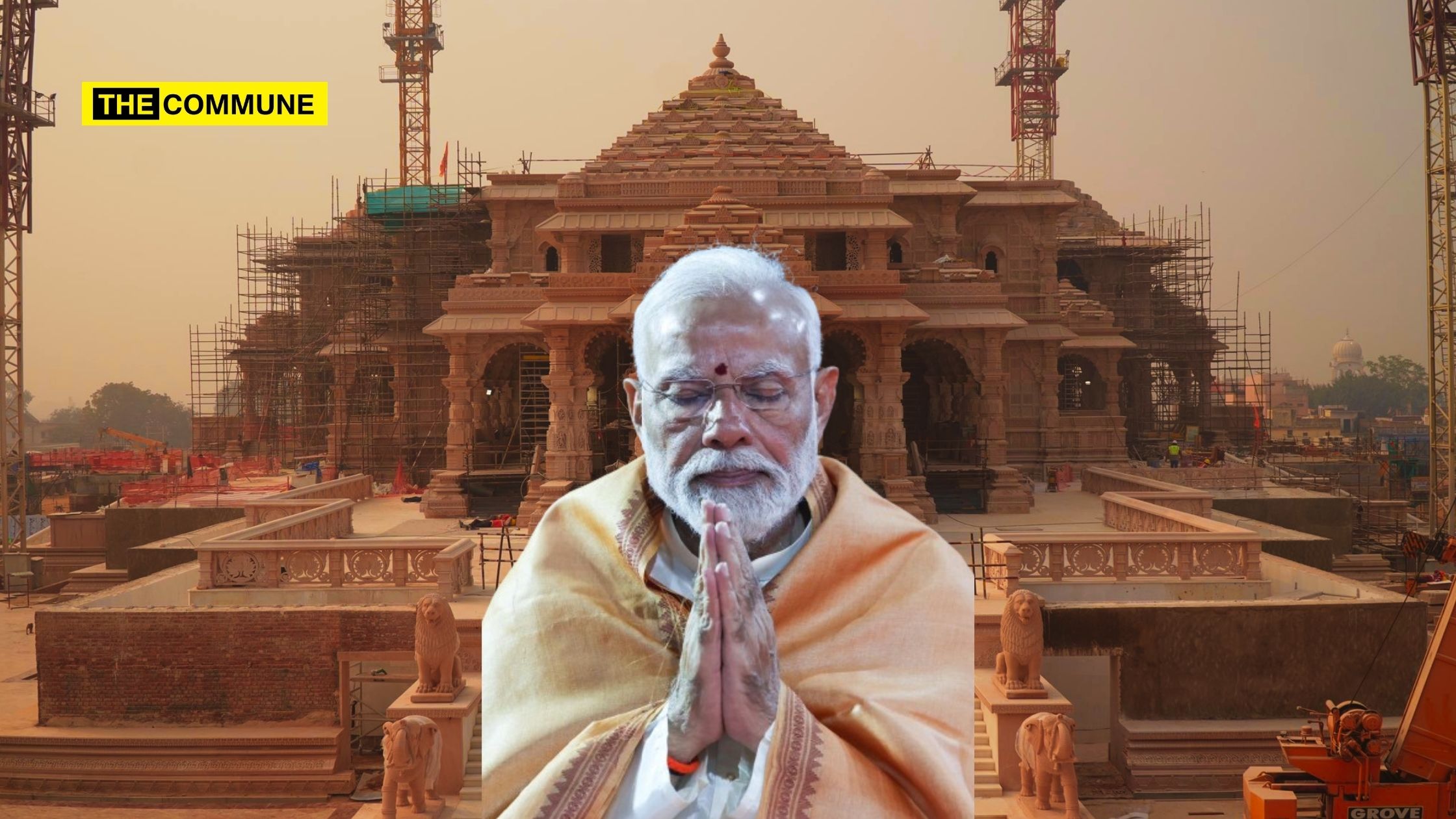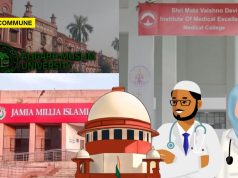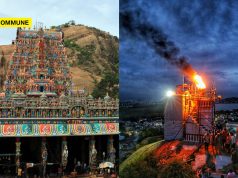
In a recent visit that has sparked curiosity and contemplation, Prime Minister Narendra Modi embarked on a spiritual journey, making stops at iconic religious sites across India. From Nashik in Maharashtra to Lepakshi in Andhra Pradesh to Guruvayur and Thriprayar in Kerala to Srirangam in Trichy, Tamil Nadu the Prime Minister’s itinerary has raised curiosity about the intersection of religion and politics. His visit to Guruvayur in Kerala on 17 January 2024, and the Srirangam visit on 20 January 2024 in particular, have ignited discussions about the more profound message behind these pilgrimages.
The Sacred Trail – From Maharashtra To Andhra Pradesh To Kerala To Tamil Nadu
The Prime Minister’s pilgrimage began in Nashik, at the Kalaram temple which is located in the Panchavati area along the banks of the river Godavari. Panchavati holds a unique significance, being the location where several pivotal events of the Ramayana unfolded. Lord Ram, Sita Devi, and Lakshmana resided in the Dandakaranya forest, situated within the Panchvati region, for a span of a few years. This Panchavati region sees its association with the Aranya Kandam of the Ramayana. It is also said that Shoorpanaka, Ravana’s sister’s nose was cut off here.
The journey continued to Lepakshi, at Veerabhadraswamy Temple in Andhra Pradesh believed by some to be the site of Jatayu Moksham. It is also believed that Jayatu Moksham also took place in Maharashtra.
From Lepakshi, PM Modi went to Thriprayar Ramakshetram and Guruvayur in Kerala followed by Srirangam and Rameswaram in Tamil Nadu, two significant temples associated with the worship of Rama.
Thriprayar Ramar Temple – Part Of The 4 Temples (Naalambalam)
Kerala is home to 4 temples which come under the Naalambalam – 4 temples. The one associated with Thriprayar Rama Temple also include a temple each for Lord Rama’s brothers, Bharatha, Lakshmana, and Shatrughna. The other three temples are located at Koodalmanikyam in Irinjalakuda, Moozhikulam Sree Lakshmana Perumal Temple and Payammal Sree Shathruknha Swami Temple around Thrissur district.
Guruvayur And Srirangam – Religious Significance And Connection To The North
Dushyanth Sridhar in an interview with India Today mentions the significance of Guruvayur and Srirangam. He says, “What catches my eye and attention are two places. One is Guruvayur in Kerala and second is in the adjacent state of Tamil Nadu which is by the banks of river Kaveri called Srirangam. In the Ramayana, we have reference where Kaushalya was worshiping her Kuladeivam, her family deity. And Rama and Sita worshipped this Lord while in Ayodhya. So Valmiki Ramayana clearly states that the divine couple Sita and Rama worshipped their family deity in Ayodhya and towards the end of the Pattabishekam, this kula Dhanam was handed over to Vibhishana. On his sojourn to Lanka, he placed this Divyamangala vigraham by the banks of river Kaveri and that is Srirangam and the Lord is Ranganathaswami. So, in a way, we all venerate, propitiate, and worship Rama and for Rama the kuladeivam, the family deity is Srirangam. Similarly in Krishnavataram, Krishna’s family deity which was earlier in Uttar Pradesh then in Dwaraka, was carried by Guru and Vayu with the advice of Uddhava by the Western Sea and that is Guruvayur where Lord Krishna is. So for Krishna the kuladeivam, the family deity is in Guruvayur, Kerala for Rama the kuladhanam is in the adjacent state which is in Tamil Nadu which is Ranganatha. So this is the significance. Ironically, Adi Shankara and Ramanuja hailed from these two adjacent states.”
Rameshwaram Temple In Tamil Nadu
Something very interesting about this temple for Ramanathaswamy is that the kings who did a lot of service to the temple were called Sethupathi Rajas. They were called so because they were the rulers who protected the Ram Sethu that connected Bharat (India) and Lanka. Ramanathaswamy temple is also known for its corridors. Rameshwaram is also connected to our former President Dr APJ Abdul Kalam.
Symbolism Beyond Borders
The Ramayana not only unifies the country from north to south but also spans a vast expanse from east to west. It traverses regions from Kambuja desham (Cambodia) to Thailand and Indonesia, where the Kakawin Ramayana is celebrated through the Kecak dance in Bali. The influence of Ramayana extends as far as Persia, where the Persian ramayanam exists. Abundant literature, iconography, and architecture corroborate the pervasive presence and impact of Ramayana across diverse regions.
Rama’s journey during his exile period is equally remarkable, starting from Uttar Pradesh and extending through Madhya Pradesh, Chhattisgarh, Maharashtra, Karnataka, and some parts of Telangana and Andhra Pradesh. Eventually, he reaches Tamil Nadu, constructs a sethu, and proceeds to Sri Lanka. This significant journey underscores the notion that Rama transcends regional boundaries, belonging to a broader cultural and geographical tapestry.
Leadership and Cultural Preservation
While governance and law and order are paramount for any leader, Prime Minister Modi’s deliberate choice to connect with India’s rich cultural and spiritual heritage underscores a commitment to preserving the nation’s civilisational identity. The Prime Minister’s visits to these sacred sites acknowledge the diverse cultural tapestry and serve as a reminder of the shared heritage that unites the country.
As Dushyanth succintly puts it, “Ramayanam itself means the path taken by Rama. What unites India is the Rama’s journey so that is why Prime Minister Modi comes all the way to Kerala to visit Guruvayur and Thriprayar to Rameswaram to Srirangam in Tamil Nadu, Lepakshi in Andra Pradesh, I’m sure he may also be visiting Bengaluru which signifies Kishkindha kandam because Kishkinta is all the way around Hampi and then he went to Nashik too.”
Prime Minister Modi’s spiritual sojourn, marked by visits to religious sites steeped in history, carries a nuanced message that goes beyond the realms of politics. The journey reflects a recognition of India’s cultural diversity, a reminder of the shared spiritual legacy, and perhaps a strategic outreach to regions with distinct cultural identities. As the Prime Minister continues to traverse the sacred landscapes, the symbolism behind his pilgrimages invites contemplation on the intricate interplay between religion and politics in the fabric of India’s unity.
Subscribe to our channels on Telegram, WhatsApp, and Instagram and get the best stories of the day delivered to you personally.




